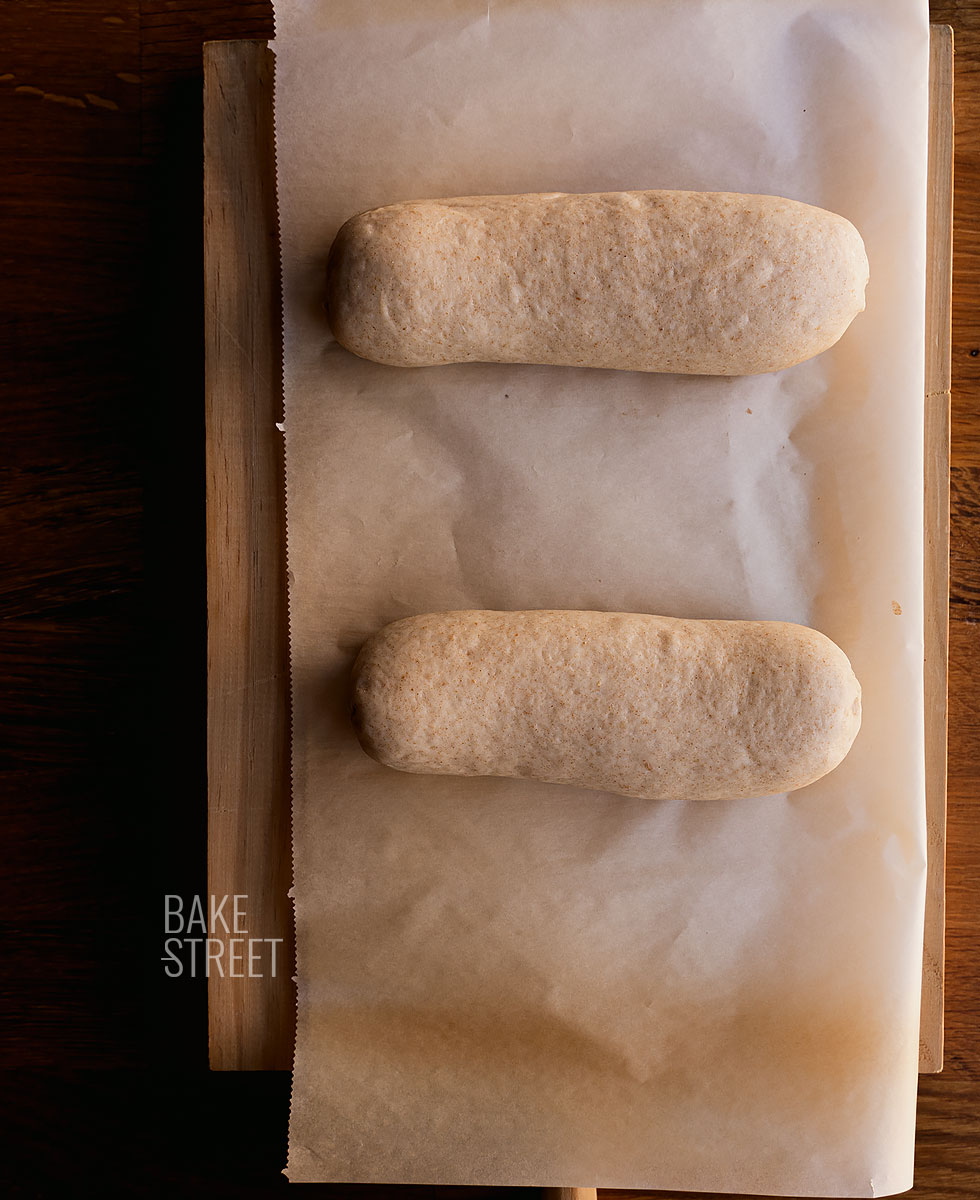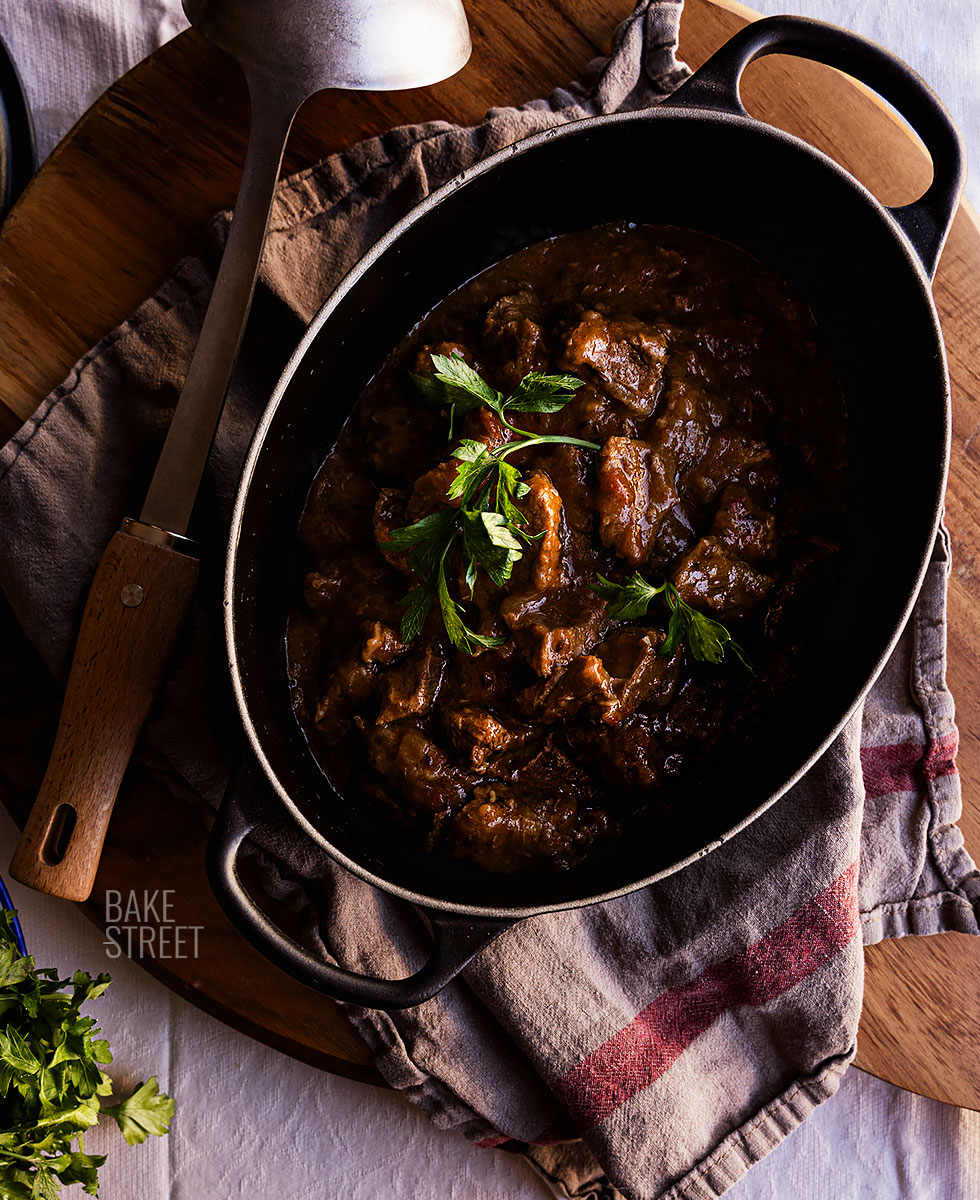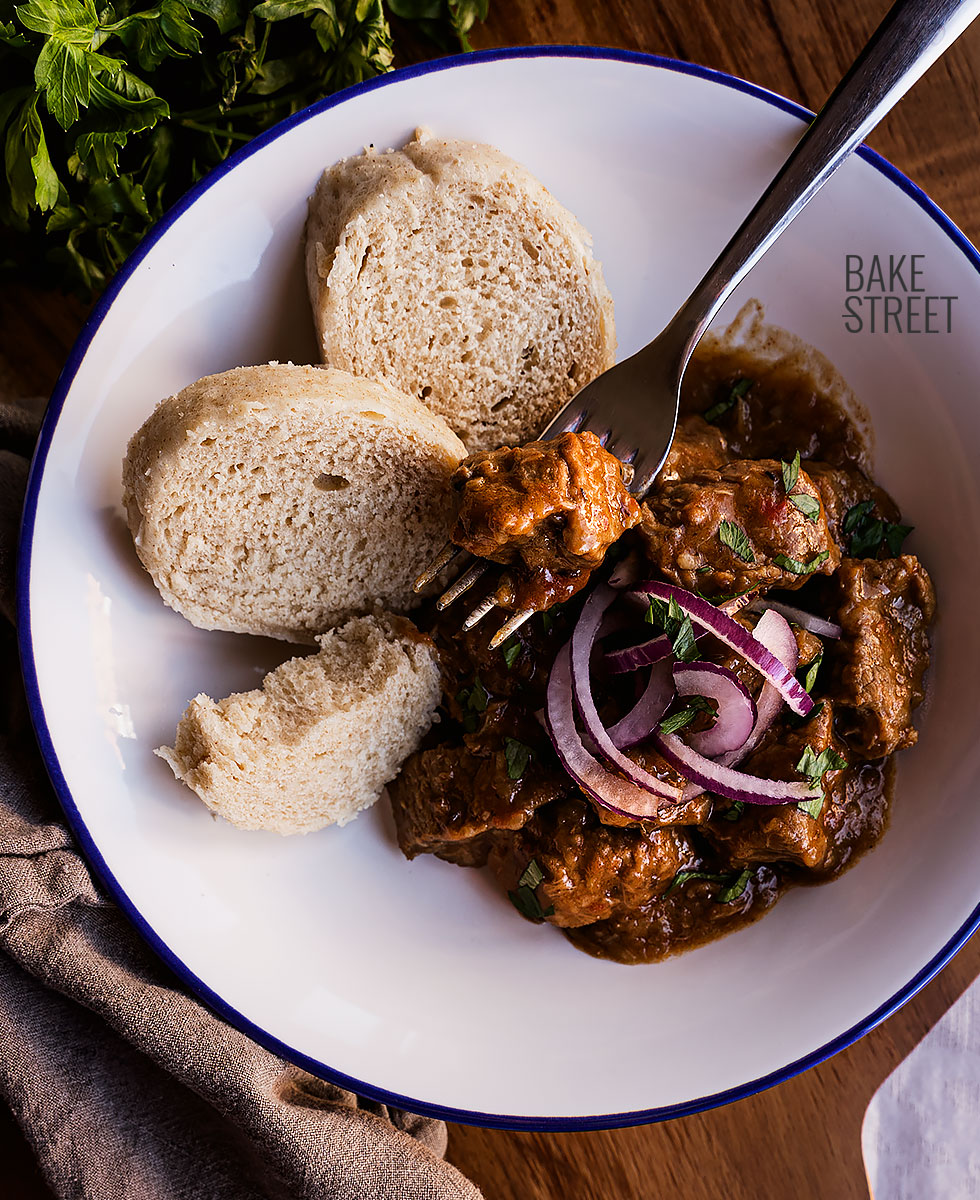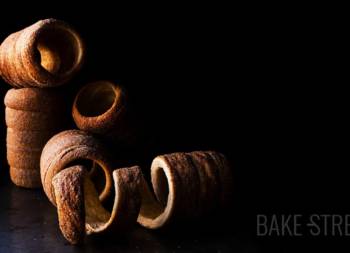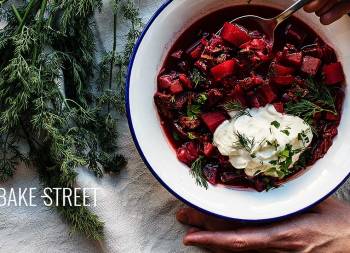
Goulash and Knedliky, Czech Republic recipe
You won’t believe it, but I prepared this Goulash and Knedliky recipe last year in September. I took the photos and saved it on the hard drive, along with another bunch of recipes that I have not yet left, to publish it during the winter. But between one thing and another, the good weather arrived, then Christmas and it was not the right time to upload a recipe of this kind.
So I was looking forward to all these dates to be able to share it with you. I also tell you one thing… The wait has been worth it because, since the first time I made it, I have prepared it many times. In fact, at home it is a fixed monthly, it is a preparation that they like very much. This has allowed me to keep trying, changing and modifying details that have considerably improved the final result.
So I’ll keep to the good things, which is what really matters.
The first time I tried Goulash was when we were on vacation in Prague. My goodness, I really, really liked it! Prague and the stew. So much so that, being there, I didn’t eat it just once. This humble and simple dish completely stole my heart.
There they presented it in two ways; the one I leave you, accompanied by knedliky and another version in which the stew was served in a bread casserole. In fact, this presentation served me as inspiration for this cheese and beer soup in bread casserole that I left you some time ago. If you want to serve goulash in individual bread pots, you can see in this post how to make them.
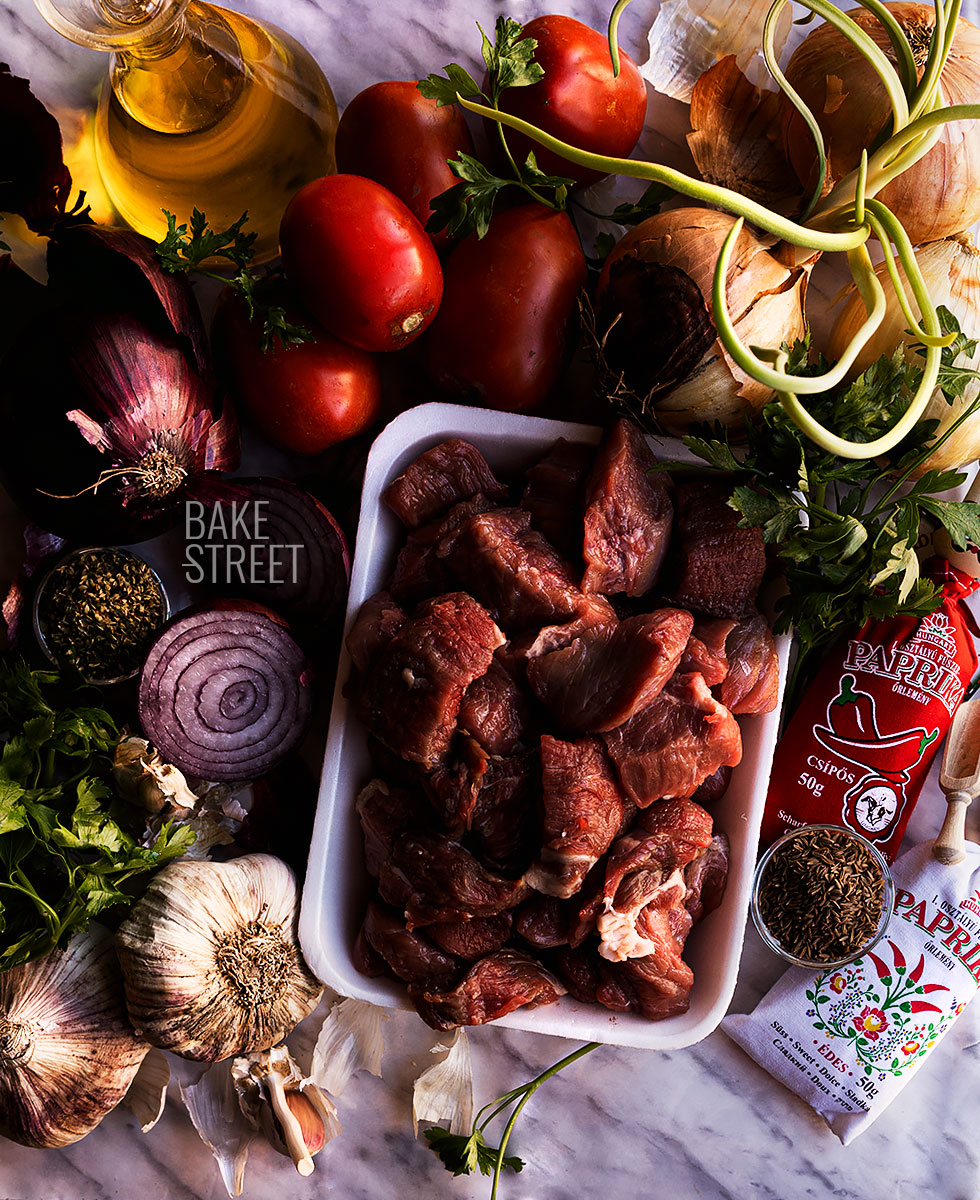
Hungarian Paprika.
Between the Danube and Tisza rivers lies the Great Hungarian Plain. Along the border, the warriors who occupied it before being expelled left a culinary legacy: coffee and coffeehouses, thinly layered dough, now known as strudel, and chili plants.
Germany, like most of Europe, loved its black pepper, which was mostly grown in India. In the 15th century, the Ottomans of Turkey conquered most of Eastern Europe, so the trade route to India was cut off and so was black pepper.
The Spanish explorer Christopher Columbus was looking for a new route, mainly for pepper, and ended up in Central America, where he found chili peppers. It had a flavor similar to that of black pepper, so he brought it with him, but it did not become fashionable as a foodstuff, but rather for ornamental purposes in gardens. Black peppercorns were still preferred.
Chili peppers had delicate flowers and hollow berries that changed their shade of color as they ripened. The nobles cultivated them as ornamental plants in their gardens and, from there, they found their way into the gardens of the peasants.
The Turks, who traded with most of Europe, found it pleasant to spice their food with chili and took it wherever they traveled to trade or conquer.
Nearby Hungarians adopted the spice into their cuisine, first calling it “Turkish pepper“, although it was considered the poor man’s pepper.
During the Napoleonic wars, at the beginning of the 19th century, black pepper became unobtainable and was priced at the price of gold. The Hungarians called them “paprika” and also dried and ground them into powder, which we also call pimentón(in Spanish).
The Hungarians used to coat their meat with the dried ground pepper, which they called paprika, on long cattle drives to places like Frankfurt, Germany, where they traded cattle. This coating, which is now called “rub” not only flavored it but also preserved it, since there was no ice or refrigerators back then. It achieved great popularity among the Germans.
At the end of the 19th century, the Hungarians cultivated new varieties of chili peppers, as well as new ways of processing them, giving rise to their own variety of paprika. They enjoy this ruby powder on bread spread with lard, in cheese, sausages, soups and, as you might guess, in goulash.
Goulash origin.
The creation of goulash originated in a very humble group of society, the cowherds, according to the distinguished Hungarian ethnologist Eszter Kisbán.
The origins of goulash date back to the 9th century, it was the stew eaten by Magyar shepherds (Hungarian ancestors). Before setting out with their flocks across the endless arid plains, they would prepare a portable stock of food by slowly cooking chopped meats with onions and other seasonings until all the liquids were absorbed. The stew was then dried in the sun and stored in sacks made from sheep guts. At mealtime, water was added to some of the meat to reconstitute it into a soup or stew.
In other occasions, they controlled their cattle and when among them there was a weaker or older cow, they sacrificed it to be able to feed themselves. Before finishing the cooking of the stew, they used to add aromatic herbs that they found in the steppes.
Paprika, an indispensable spice for flavoring modern goulash, was added to the formulation in the 18th century. The classic “kettle goulash” is prepared by frying pieces of veal or lamb in lard together with onion. Garlic, caraway seeds, tomatoes, green peppers and potatoes are some of the ingredients that complete the stew.
Székely gulyás, another Hungarian specialty, is a pork and sauerkraut stew flavored with tomatoes, onions, caraway seeds and sour cream.
The word Goulash.
It comes from the Hungarian word Gulyás, which is pronounced almost the same, but without L, and designates a Hungarian shepherd or cowherd.
The Hungarian plains were the perfect place to raise cattle, in fact, the shepherds went out to sell their famous gray cattle all over Europe. As I mentioned above, they used to slaughter the weakest cows, those that could not stand the journey and were used to prepare this stew for the gulyas (shepherds) in a cauldron (bogrács) placed over a fire.
“The four pillars of Hungarian cuisine are gulyas, pörkölt, paprikas and tokány. According to a 1969 Gallup poll, gulyas are one of the five most popular meat dishes in the American culinary scene. Of course, the goulash served there differs greatly from the traditional recipe.
When the shepherds wanted to eat, they would take out a piece of the cooked and dried meat, add a little water and reheat it. With a lot of liquid, it became a goulash soup…. But in case of adding less quantity, it became meat with sauce. To this day, this distinction still exists, probably to baffle foreigners and cookbook writers. The more beef parts and offal used, the better the goulash. Of course, lard and bacon (either or both) along with chopped onion are a must.
No spice other than caraway should ever be used. Never French it with wine or germanize it with brown sauce. Never put any other garnish than diced potatoes or galuska. But it is true that there are infinite variations: Fresh tomatoes or tomato paste, garlic, sliced green peppers, chili peppers or chillies, etc… can be used.
Mrs. Mariska Vizvary tried an interesting technique that was originally published in the 1930s. She added grated raw potatoes at the beginning of cooking, presumably to give body to the soup, and cooked bones and vegetables separately to make a strong broth for the purpose of strengthening the gulyas soup.” — The Cooking of Hungary (p. 270-1)
Second half of the 19th century.
It became very important to protect the treasures of Hungarian culture, language and gastronomic delicacies as part of the movement to emphasize Hungary’s national identity and its independence from the rule of the Austrian Habsburg dynasty.
Restaurants began to include goulash on their menus and, in the second half of the 20th century, the soup became Hungary’s number one dish that every tourist coming to the country had to try.
In English, gulyás became goulash and in some parts of the world stews and stews are also called that way.
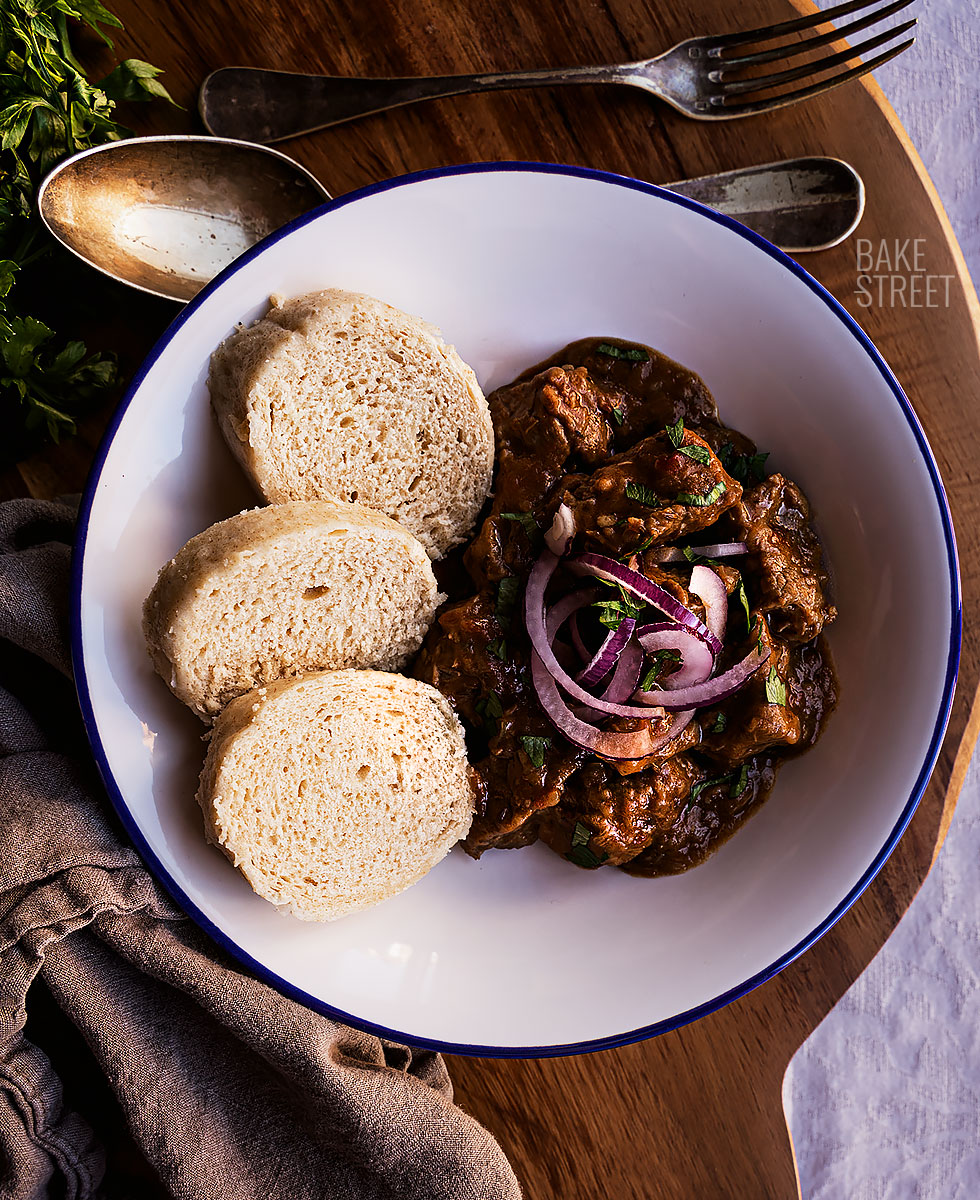
Recipe Goulash and Knedliky
GOULASH:
Recipe adapted Czech Cook Book y Mission Food
- 1 kg of cut veal (I recommend shank or chuck)
- 5 large sweet onions, sliced
- 80 g olive oil
- 2 teaspoons caraway
- 3 teaspoons sugar
- 3 teaspoons Hungarian paprika (two of the spicy variety and one of the sweet variety)
- 4 large garlic cloves, sliced
- 2 red tomatoes for frying, blanched and chopped or 85 g of tomato paste
salt and ground black pepper to taste - 1/2 liter of water
- 2 teaspoons dried marjoram
- 20 g cake flour
- sliced red onion + chopped parsley for garnish
KNEDLIKY:
Recipe adapted Czech Cook Book
- 300 g plain flour
- 160 g whole milk
- 4 g sugar
- 4 g salt
- 50 g egg
- 2 g dry yeast or 6 g of fresh yeast*
*This amount of yeast is the maximum recommended to use, 2% with respect to the final weight of the flour. We can reduce the amount to 1 gram of dry yeast or 3 grams of fresh yeast, taking into account that the rising time will be longer. In my case I usually use the latter quantities, if we organize ourselves well, we will have it ready for lunchtime.
Instructions
Prepare Goulash.
- Finely slice the sweet onion. Set aside.
- In a large pot or cocotte, add the oil and place over medium high heat.
- Once it is hot, add the chopped meat. Brown and seal.
We will move from time to time to make sure that the meat is browned all over the surface evenly. - Remove from the cocotte and reserve on a tray.
- Add the sliced onion to the cocotte, reduce to medium heat and cook for 5-7 minutes. It should not brown, but soften.
- Add the crushed tomato or tomato paste together with the sugar, paprika, caraway, garlic, salt and black pepper. Stir well, constantly, and cook for 1-2 minutes. At this point we will be careful to avoid burning/toasting the paprika, otherwise it will leave a bitter taste.
- Add the meat and its juices along with the water. Reduce to low heat and cook for 2 hours.
- When there are 30 minutes left to finish cooking, add the marjoram together with the flour dissolved in two ladles of hot broth. Stir well to distribute homogeneously.
- Before removing from the heat, check the tenderness of the meat. In case it is not very tender, we can prolong a little more the cooking. And if it is necessary to add a little more water, we will do it.
- Taste and adjust the salt and pepper if necessary.
- Remove from heat and let stand for 10 minutes.
Prepare knedliky.
- In the bowl of the KitchedAid or a mixer, add the flour together with the milk, sugar and egg.
- Knead until the dough is amalgamated.
- Add the yeast and knead for 2 minutes.
- Finally, add the salt and knead until the dough is smooth, soft and with developed gluten.
- Make a ball with the dough, put it in a bowl or airtight container and let it rise until it doubles in size. In my case it was 2 hours and 30 minutes at 77ºF/25ºC.
Shape.
- Dump the dough onto a clean work surface and divide into two equal pieces.
- Shape in the same way as we shape the long Vienna bread, but omitting the pre-shaping step.
- Place on a silpat, Teflon or baking paper. Cover with plastic wrap and let stand at room temperature for 30 minutes.

Cook knedliky.
- Fill a large pot, or two medium-sized pots, with water and place over high heat. Bring to a boil.
- Once the water comes to a boil, add salt to taste (a generous pinch) and reduce heat to low.
- Carefully put the knedliky into the pot. Put the lid on and cook for 20 minutes.
- Halfway through cooking, turn the loaves over, cover again and finish cooking time.
- Turn off the heat and remove carefully. Drain well and place on a wooden board.
- Prick the surface of the loaves several times with a skewer to allow the steam to escape.
- Cut into slices of 2-3 cm.
Serve goulash.
- Serve goulash in deep plates, garnish with sliced red onion and chopped parsley.
- Accompany with slices of knedliky and serve immediately.

Notas
- Using a good quality meat will make your Goulash good or majestic. It is very important to adjust the final cooking time so that the texture is very tender, like butter. Beef, veal, pork or lamb can be used.
- Typical cuts are shank, shin or shoulder; thus, goulash gets its thickness from hard, well-exercised muscles, rich in collagen, which turns into gelatin during the cooking process.
- Cooking over low heat, with love and patience, will ensure that the final result will be exceptional in textures, flavors and aromas.
- To avoid crying when cutting the onions, which are quite a few, I refrigerate them overnight. The cold prevents the onions from releasing allinase, this enzyme is very volatile. If the onion is very cold, we greatly reduce the release of allinase, almost completely. And, consequently, the tearing that this causes us.
- If you do not have Hungarian paprika, in my case I got it as a gift, you can use sweet and spicy paprika.
- If you don't want to use hot paprika, you can use the whole amount of the sweet variety in the recipe.
- Marjoram, which is a cultivated variety of wild oregano, can be substituted for oregano, although it is not the same. But it can be useful in a pinch.
- It is important to control from time to time the quantity of water so that it is not reduced in excess. The meat should always be covered with water.
- We can freeze the stew, if desired, in airtight containers. It will keep in perfect condition for 30 days.
- Knedliky are boiled breads, their shelf life is very short. They should be eaten the same day they are cooked. In case of surplus, wrap them in film and refrigerate. Before consuming them, we give them a heat shock in the microwave together with a glass of water.

I strongly recommend that if you like stews made with love and care, you should prepare this Goulash and Knedliky to better cope with these winter days.
During this time of the year, I love to prepare stews, creams and soups. In fact, I usually repeat few recipes, not because I don't like them, but because I feel like trying new recipes. But there are some, like this one, that stay forever in my recipe book.
I wish you a wonderful day and a great start of the year! We haven't read each other since last year :)
Lots of love,
Eva
Sources: Britannica, Kitchen Project
